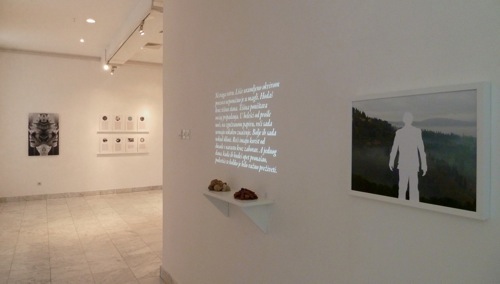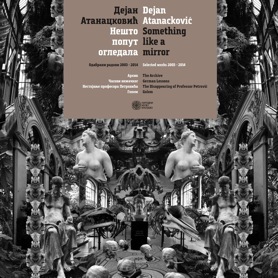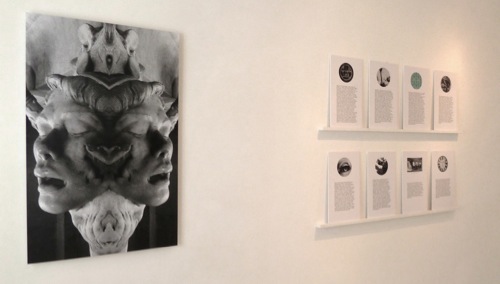Something Like a Mirror / Nešto poput ogledala
National Museum of Kraljevo, Serbia / Narodni muzej Kraljevo
May 27 - June 8, 2014


Something Like a Mirror / Nešto poput ogledala
National Museum of Kraljevo, Serbia / Narodni muzej Kraljevo
May 27 - June 8, 2014

Home / Works / Biography / Teaching / Contact & Links





The works selected for this exhibition are brought together by themes of body and memory which, over the years, have been in many ways dominant in Atanackovic’s work. The subject of the body, starting from the body of the nineties – manifested in the rhetorical linkage between body and earth, or in the images of bodies exposed to violence – have been part of his exhibitions of the second half of the 1990s. In these works, the body as a reflection of social circumstances is related to the attempts to interpret the limits of personal freedom.
In relation to this subject, artist’s historical references can be placed in the second half of the nineteenth century and in the last decade of the twentieth. XIX century was characterized by the development of systems of control and discipline of the body, its surveillance and mapping, by the defining of the other, and by a certainly very significant use of photography for these purposes. The end of the XX century, on the other hand is a period that I experienced, in the context of the Yugoslav wars, as a time of intense display of the body, in particular: the body exposed to extreme violence, pornographically represented body, anaesthetized body of a citizen accustomed to the simultaneity of violence and pornography and the metaphorical body of the pseudo-patriotic rhetoric.
Both referential periods lead us to experience the body as a kind of space in which diverse economic, cultural and political investments are being made, but where at the same time a significant battle for the individual freedom is taking place. A good part of the western art of the second half of the XX century offers a response to the circumstances established in the XIX century, through the awareness of artists, women in particular, about the body as a discourse of freedom. In the disintegrated Yugoslavia, the Nineties represent a denial of this experience and return to the original problem of segregating and defining the diverse, through primitive patriotism and glorification of brutality.
The themes of body and memory are connected and mutually intertwined. The body remembers; the memory in its most mysterious manifestations is primarily a strong physical experience, especially when it comes to early, childhood memories. Just like the body, memory develops in relation to a space, and in the experience of an individual it eludes a confinement within definitive limits. At the same time, the memory and the body are the most common subjects of social and cultural confinement, which is the cause of a permanent internal conflict that consequently requires from us the keeping of personal histories. A personal history, therefore, may be considered as a potentially subversive category.
The exhibition at the National Museum of Kraljevo, Serbia, consists in 5 “chapters”: Something Like a Mirror (2014), The Archive (2014), German Lessons (2009-2014), The Disappearing of Professor Petrovic (2014) and Golem (2003).
The works Something Like a Mirror and Archive speaks of the body of scientific superiority. In the first, the body is transformed into architectural elements - caryatids – deriving from a sculpture by Emmanuel Frémiet , Orangutan or A Savage from Borneo (1895), exhibited in the foyer of the Paris Museum of Paleontology. The Archive is motivated by a research in the photographic archive of the Anthropological Museum in Florence, and it is developed through a digital editing of two scenes: photographs of the European subjects and the “diverse”: native inhabitants of the colonial possessions. German Lessons and Golem have been presented over the years in various forms, the first one in Belgrane, Florence, Trieste and Tirana, the second in Sarajevo, Belgrade and Florence. German Lessons is dedicated to the post-IIWW disappearance of the German population from the regions of ex-Yugoslavia, while the Golem is a music/video installation dedicated to the rhetorical, pseudo-patriotic binding of the images of earth and body.
Curated by: Ljubiša Simović
Text in the catalogue: Jadranka Tolić

[ press release ]